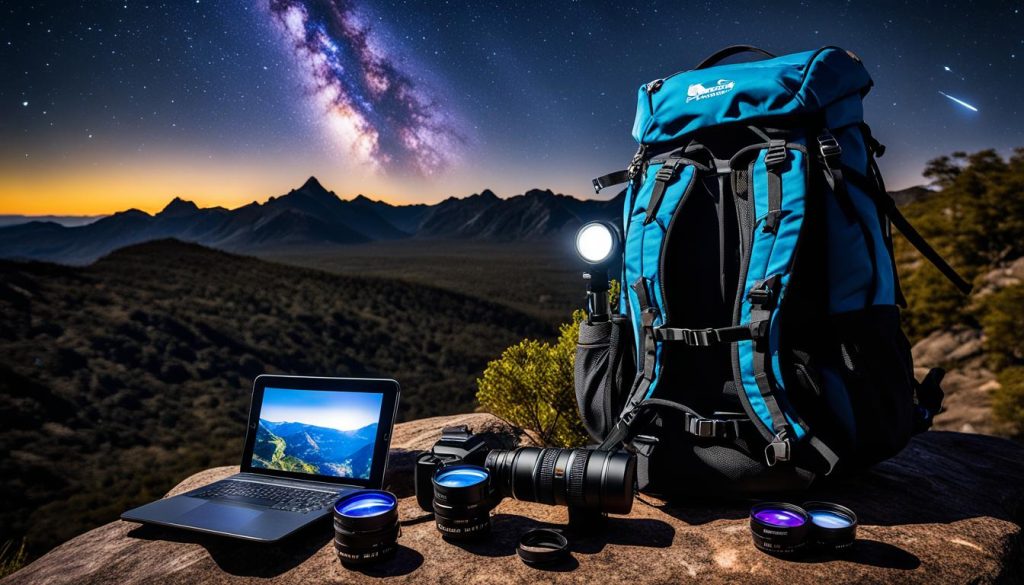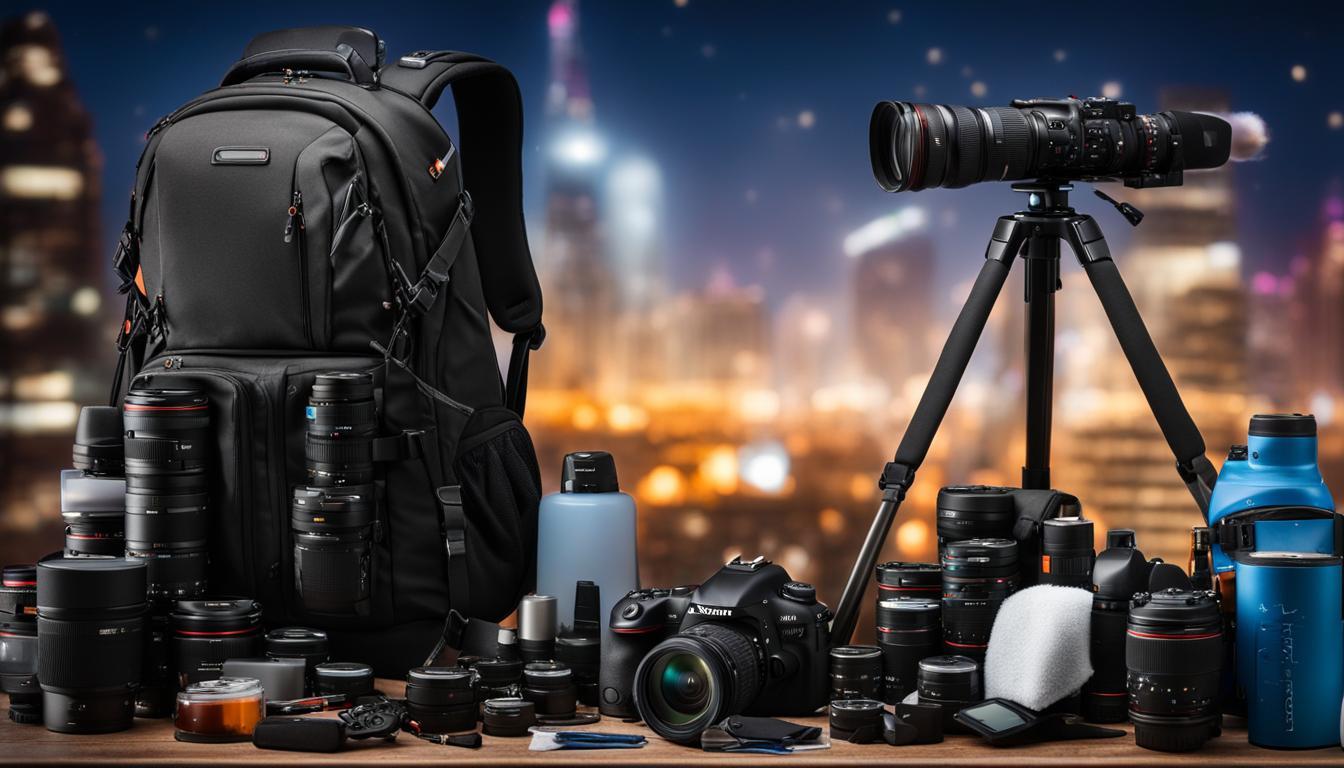Have you ever tried capturing stunning nightscapes, only to realize you missed out on a perfect shot later? Don’t worry; we’ve all been there. To help you avoid such mistakes, we’ve created the ultimate night photography checklist essentials that every photographer needs to know. Whether you’re a beginner or a pro, this checklist can help you capture eye-catching night shots with ease.
Key Takeaways:
- The night photography checklist essentials can help you capture breathtaking nightscapes.
- Include the right camera and lens, master essential exposure settings and have necessary accessories at hand.
- Don’t miss out on the chance to capture stunning night photographs.
Choosing the Right Camera and Lens
When it comes to night photography, using the right camera and lens can make a huge difference in the quality of your shots. To capture stunning nightscapes, consider a camera with manual controls and low-light capabilities. Some popular options include the Sony Alpha a7 III, Nikon D750, and Canon EOS R5. These cameras are known for their exceptional low light performance, allowing you to capture sharp and detailed images even in the dark.
Once you have a suitable camera, it’s important to choose the right lens for night photography. A lens with a wide aperture, such as the Sony FE 16-35mm f/2.8 GM or the Canon EF 50mm f/1.4 USM, is ideal for capturing the faint light of stars and cityscapes at night. Additionally, consider investing in a lens with image stabilization, such as the Nikon AF-S Nikkor 24-70mm f/2.8E ED VR, which can eliminate camera shake and produce sharper images.
Tip: Always check the compatibility of your camera and lens before making a purchase.
Mastering Exposure Settings for Night Photography
When it comes to night photography, getting the exposure settings right is crucial. This section will cover the essential exposure settings you need to master for successful night photography. By understanding the role of aperture, shutter speed, and ISO, you’ll be able to capture stunning nightscapes.
Aperture
The aperture controls the amount of light entering the camera, affecting the depth of field. For night photography, a wide aperture is preferred to allow more light to enter the lens. This creates a shallow depth of field, which is perfect for isolating your subject against a blurred background.
Tip: To create a starry effect in your night photographs, select a small aperture like f/2.8 or f/4. This will create a beam of light for each star, giving your photo the appearance of a starry night sky.
Shutter Speed
The shutter speed determines how long the camera’s sensor is exposed to the light. For night photography, slower shutter speeds are preferred to capture as much light as possible. However, using a slow shutter speed can cause unwanted blurs in your photos. To avoid blurs, use a tripod to keep your camera steady.
Tip: To capture light trails from moving cars or stars, set your camera’s shutter speed to a few seconds or more.
ISO
The ISO controls the sensitivity of the camera to light. For night photography, a higher ISO is preferred to capture more light. However, using a high ISO can also create a lot of digital noise in your photos. To reduce noise, start with a low ISO and increase gradually until you get the desired exposure.
Tip: To reduce digital noise in your night photos, try to keep the ISO as low as possible while still getting the right exposure.
By understanding and mastering these essential exposure settings, you’ll be able to capture stunning nightscapes like a pro. But remember, practice makes perfect, so keep experimenting until you find the settings that work best for you.
Essential Accessories for Night Photography
Successful night photography not only depends on the right camera and exposure settings but also on having the essential accessories at hand. These accessories can help you capture stunning nightscapes with ease, and take your photography to the next level.
Tripods:
A sturdy tripod is essential for night photography as it keeps the camera steady, preventing blurry shots. Look for a tripod made of durable materials that can handle the weight of your camera and lens.
Remote Shutter Releases:
Remote shutter releases allow you to take photos without physically touching your camera, which reduces movement and potential blur. There are various types of releases, including wired and wireless options.
Flashlights:
Flashlights not only help you find your way in low light conditions but also aid in composing your shot more accurately. Look for lights with adjustable brightness settings and diffusers so you can control the amount and quality of light.

Lens Filters:
Lens filters can help you achieve specific effects in your night photographs like reducing light pollution, enhancing contrast, and reducing glare. Some popular choices include UV, polarizing, and neutral density filters.
Spare Batteries and Memory Cards:
Running out of battery power or storage space in the middle of a shoot can be a nightmare. So, always keep extra batteries and memory cards with you, and mitigate potential problems.
Camera Bag:
A sturdy camera bag is necessary to keep all your equipment organized, safe and within reach.
By having these essential accessories in your toolkit, you’ll be ready to capture stunning nightscapes with confidence.
Conclusion
Now that you have all the information you need to take stunning night photographs, it’s time to put it into practice. Remember to choose the right camera and lens for the job. Make sure you’re familiar with your exposure settings and how to use them. And don’t forget to pack your essential accessories!
By following the ultimate night photography checklist essentials outlined in this article, you can capture breathtaking nightscapes with ease. With practice and patience, your skills will improve, and you’ll be able to take stunning photographs that truly showcase the beauty of the night. So, get out there and start experimenting with your newfound knowledge!






